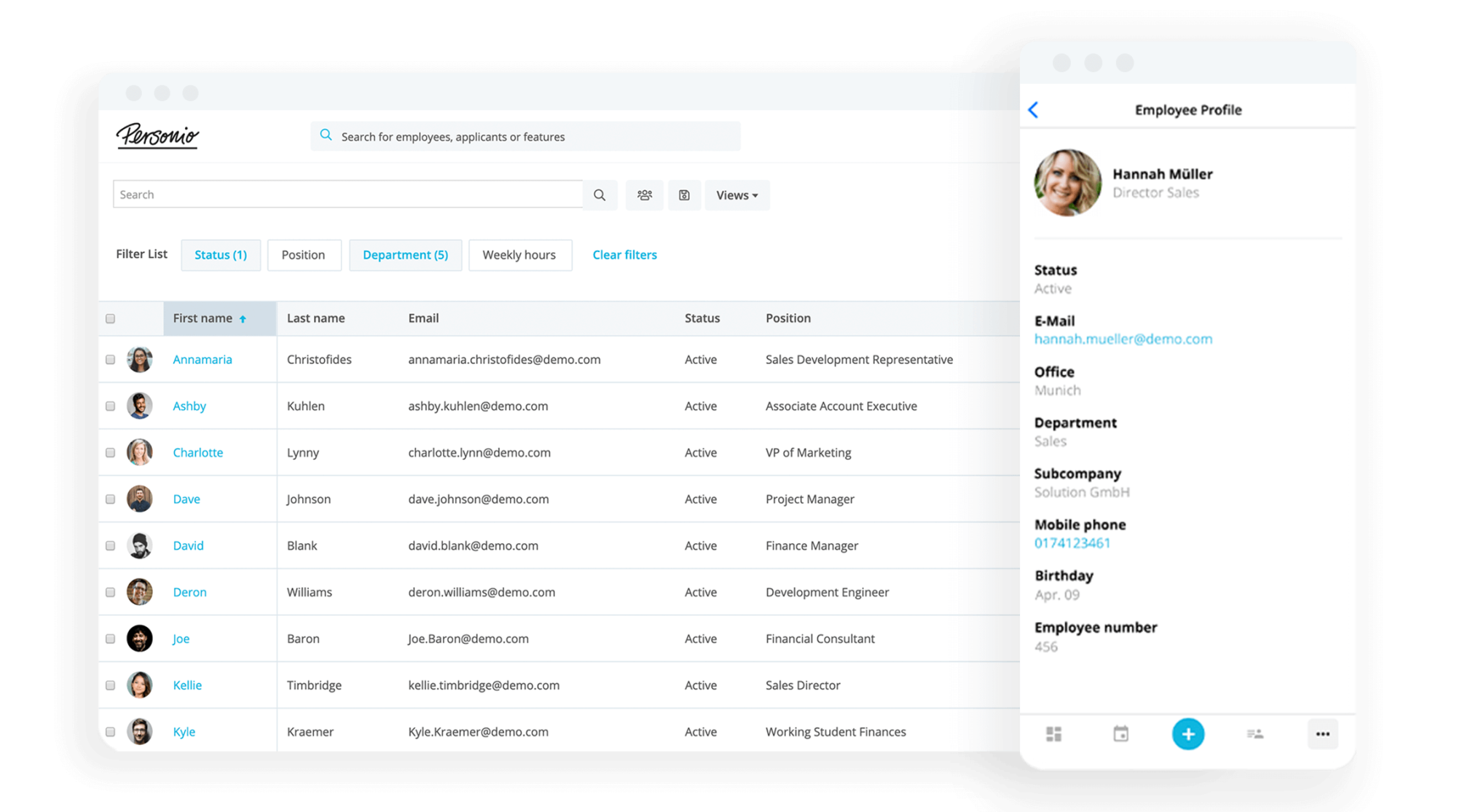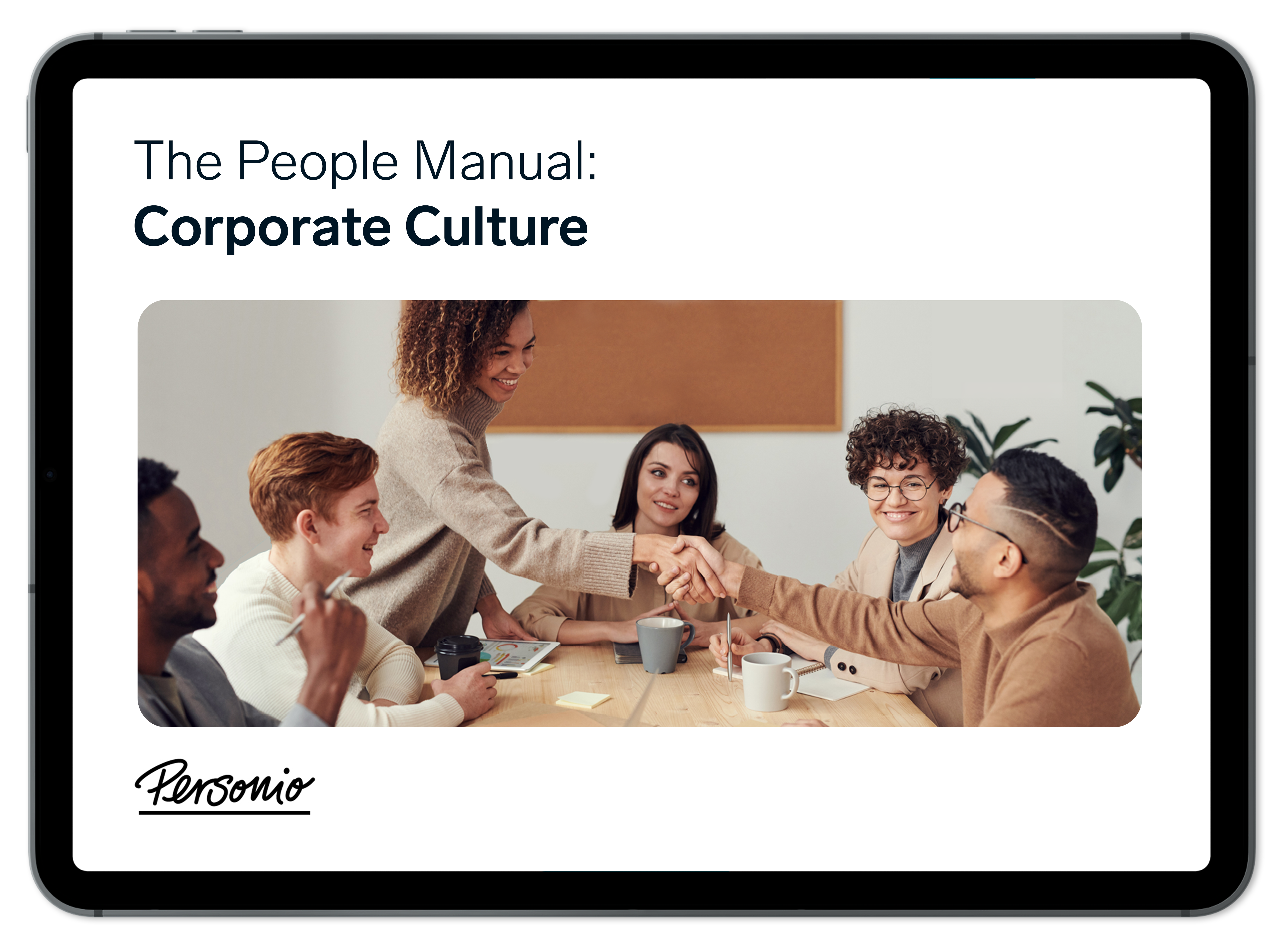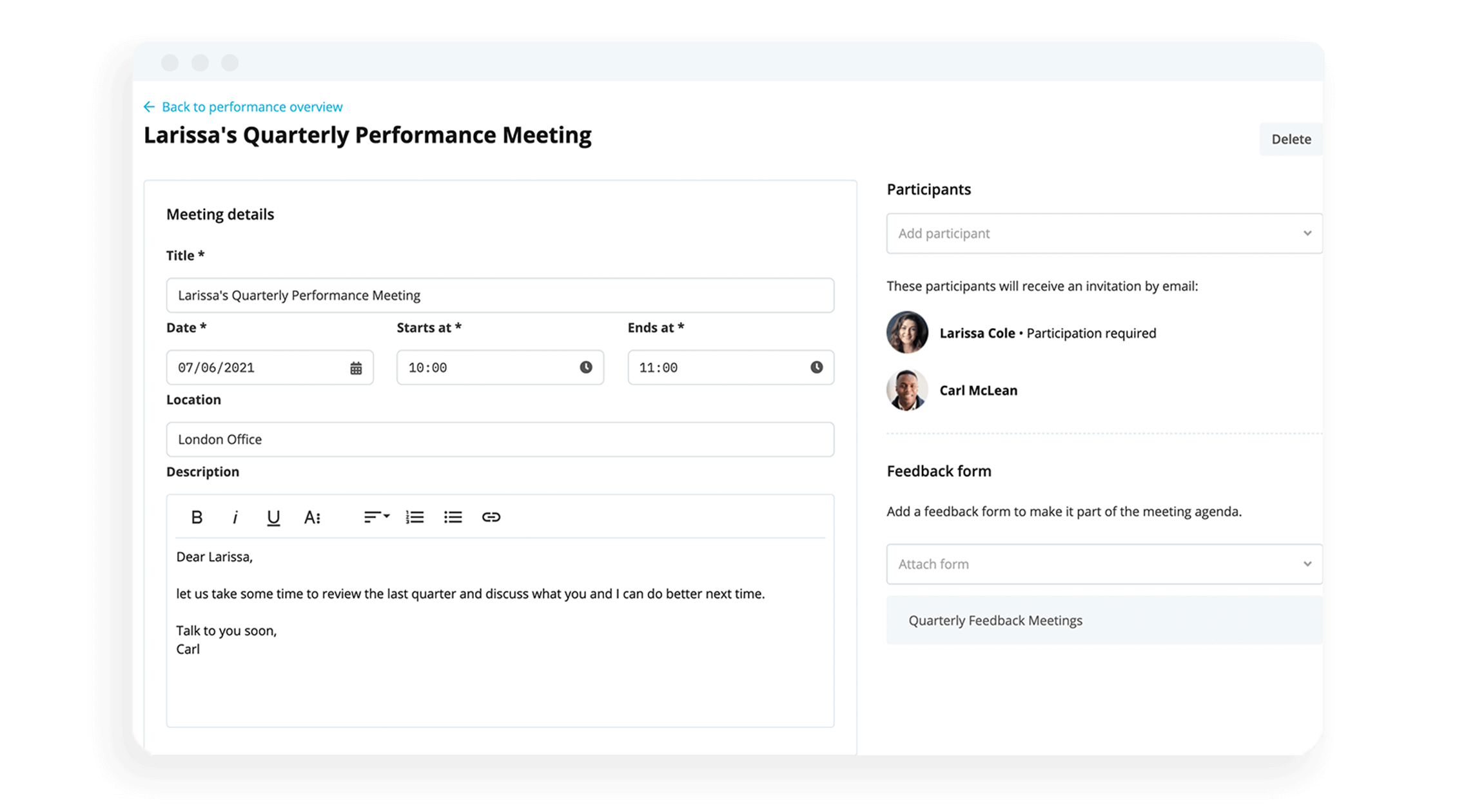The Critical Role of Workplace Mediation

Even the most cohesive workplace teams experience conflict from time to time. These confrontations may start as small arguments but they can quickly escalate into larger, more severe fights if left unchecked. Workplace mediation is the key to settling smaller squabbles before they escalate and disrupt the rest of your team.
Below is a comprehensive overview of mediation in the workplace, demonstrating why it’s an essential inclusion in HR people management strategies.
Key Facts
Workplace mediation is when a third party helps resolve a dispute between two or more parties in your workplace.
Successful mediation involves active listening while guiding the other participants to mutually beneficial outcomes.
Mediation is typically an informal process with no legally binding component.
Contents
- 1What Is Workplace Mediation?
- 2When To Consider Workplace Mediation
- 3Benefits Of Mediation In The Workplace
- 4How To Mediate Workplace Conflicts: The Process Explained
- 5Key Skills for Workplace Mediators
- 6Key Factors For Effective Workplace Mediation
- 7Frequently Asked Questions
- 8Let Mediation Build a Peaceful Workplace
What Is Workplace Mediation?
Workplace mediation is a conflict management process where an impartial individual works to settle a dispute between employees. A mediator is responsible for arbitrating between two or more parties, catching the conflict in its initial stages before it can escalate. The mediator hears all sides of the story and offers the fairest compromises possible.
When To Consider Workplace Mediation
The earlier a conflict mediation happens, the higher the chance of success and the less damage is done to workplace morale. But intervening before conflict escalates depends on your ability to recognise the signs that it’s there. There are a few obvious indications, like if two employees go out of their way to avoid each other, and less obvious ones, like rumours spreading in the office.
There’s An Accusation Of Inappropriate Behaviour
One of your workers accuses a colleague of behaviour that makes them uncomfortable, such as making off-colour jokes. Left unchecked, this behaviour can escalate and create an unsafe environment for more employees. A mediator can help the employee recognize their problematic behaviour and facilitate an apology and promise to clean up their act.
An Employee is Accused Of Discrimination
One of your workers accuses a colleague of discriminating against them based on race, religion, sexuality or another trait protected by the Equality Act. This behaviour creates an unsafe work environment. If left unchecked, affected employees may leave or take legal action. A mediator can intervene, facilitating a discussion between the offending employee and management and other stakeholders.
One Place for All Your Employee Data

Keep a clean record of employee information in a safe and secure place.
Employee Data With PersonioA Miscommunication Results in a Disagreement
Whether a comment taken the wrong way or misinterpreted instructions, miscommunication can cause friction in otherwise productive working relationships. Mediators can help facilitate productive discussions that help employees flag what’s going wrong and devise solutions to communicate more effectively moving forward.
A Clash of Personalities or Work Styles
If employees don’t see eye to eye professionally or personally, those disagreements can get in the way of productivity and make for an awkward situation for other workers. Mediators can help these employees productively discuss their differences before these small disagreements become big problems.
A Disagreement Between Departments
Disagreements between departments are similar to disputes between employees but on a larger scale. If department heads or team leads don’t get along, whether personally or professionally, that spills over into the workforce and affects how company-wide goals are met. Similar to interpersonal disputes, a workplace mediator can diffuse the tension and help teams get back on track.
Benefits Of Mediation In The Workplace
Workplace mediation is quite valuable for helping people from different backgrounds and points of view get along in a professional setting. The benefits go beyond simply cooling down tensions, though. The below advantages make having workplace mediation a worthwhile part of a conflict management strategy in the office.
Foster Constructive Dialogue
A workplace mediator doesn’t just try to resolve the issue but offers solutions that help ensure the argument never happens again. They help the parties move past seemingly impassable arguments and find a resolution that leaves all parties satisfied. Key to that is productive dialogue where the parties learn to express themselves and their concerns without getting stuck on an argument.
Improve Employee Relationships
A neutral party smoothes friction when tension is high and gives team members the tools they need to avoid future clashes. Depending on the situation, a mediator provides techniques to encourage honest and open dialogue. With these tools in hand, employees can positively voice their concerns without starting a fight.
Reduce Legal Risks
Your mediation team is the first to handle escalated situations that move beyond simple spats between coworkers, like sexual harassment or discrimination against a protected demographic. Not only can these situations threaten worker safety, but not addressing these issues from the get-go can open your company to legal ramifications. A mediation strategy coaches your HR team appropriately, provides the right insight and enables them to take proper action when necessary.
Enhance Overall Workplace Culture
Mediation is useful for building or maintaining an organisational culture of mutual respect among your employees. Resolving conflicts, especially if they’re just misunderstandings, builds trust within your workforce and introduces more effective communication methods shared between workers. As a result, collaboration is more robust and ideas are shared more freely.
Improve Employee Engagement and Retention
Mediating disputes demonstrates that your company cares about your employees' comfort. This way your workforce is more likely to remain with the company because they know management steps in properly when larger issues are at stake. And that consideration, in turn, increases employee engagement and their desire to stay with your organisation.
A decade of insights on corporate culture

Download one of our latest People Manuals on the subject of corporate culture and become a subject matter expert today.
Download it todayHow To Mediate Workplace Conflicts: The Process Explained
Mediating is a delicate process because mediators are entering a situation with elevated tempers. Below are the steps to navigate flared emotions and develop an effective solution.
1. Outline Mediation Rules
The mediator should establish their own behavioural standards and explain their end goal for the mediation. Structuring the meeting at the beginning helps ensure everyone remains on the same page throughout the process. Most importantly, the mediator should make sure both parties want to participate; forcing participation may lead to worse outcomes.
2. Have Private Discussions with Each Individual
Mediators should speak with each involved person to get their side of the story before making any judgements about the situation. Having that insight lets them get closer to finding the root cause of the conflict while also giving each employee a chance to vent in a healthy and productive way. It also allows the mediator to ask each staff member what outcome they hope to achieve so their point of view can be taken into consideration.
3. Collaborate to Find Solutions
Once both parties have calmed down and reflected, the mediator gathers them in one room to brainstorm resolutions to the conflict. Typically, the employees talk the most, with the mediator encouraging conversation and helping employees navigate more difficult moments. And, as a third party who knows how the situation is viewed from all perspectives, they often guide the participants to understand each others' viewpoints.
4. Encourage Compromise
This is the stage where the mediator and employees often find a compromise to resolve their disagreement. The third-party representative will encourage win-win solutions during this process stage to help ensure both parties leave the mediation happy.
5. Draft a Written Agreement
Once an agreement is reached, the mediator drafts a formal agreement on initiating any changes discussed in the meeting. The document's language is easy to understand and free of jargon so everyone can reference it with ease.
Before ending the meeting, the mediator reviews the resolution, ensuring all parties understand what’s expected of them in the future. While the employees could sign the agreement to add weight to the outcome, it’s not strictly necessary.
6. Closure
At the close of the mediation process, the mediator gives participants a copy of their agreement to help them remember their new expectations. Final talking points revolve around advising on overcoming obstacles to those expectations and summarising the next steps before the meeting ends.
Key Skills for Workplace Mediators
Mediators are in a position where they can very easily make a disagreement worse by showing bias, saying the wrong thing, or misunderstanding the situation. Being a successful mediator has specific critical skills that will resolve problems as amicably as possible. Those skills are:
Active listening
Empathy
Neutrality
Communication
Problem-solving skills such as critical thinking and analysis
Key Factors For Effective Workplace Mediation
Workplace mediation can only be as successful as your company's resources available to the HR department. While much of mediating is talking and listening, certain factors can help mediators reach positive outcomes. Those factors include:
Management support. Mediators can’t do their jobs if they’re never alerted to a problem. Managers must carefully watch their team and respond quickly if they notice a deteriorating professional relationship.
Clear mediation policies and procedures. Policy gives a step-by-step guide on interacting with a disagreement between two people and what’s appropriate to do with the information collected during the process.
Training for mediators. In-depth training in mediation helps close any potential skill gaps in company mediators while ensuring they stay on top of the latest techniques.
Fostering a culture of open communication and respect. A company culture with an established open communication policy helps the mediator get the necessary information without pushing too hard. Additionally, it helps ensure that any resolutions reached will stick long-term.
Frequently Asked Questions
What Are Examples of Mediation in the Workplace?
Mediation in the workplace could include:
Facilitating positive dialogue between two departments
Assisting two employees to work through a sticky situation
Advising HR departments regarding serious accusations of harassment or discrimination
Is Workplace Mediation Legally Binding?
Workplace mediation is an informal process that has no legally binding elements.
What Is the Role of HR in Mediation?
Human resources are typically in charge of the mediation process, acting as a neutral third party to help resolve disputes. In some cases, HR may need to bring in an outside party to navigate a particular situation.
What Are the 5 Principles of Mediation?
The five principles of mediation are:
Neutrality
Impartiality
Independence
Confidentiality
Integrity
Let Mediation Build a Peaceful Workplace
A company atmosphere built on hostility and mistrust is a toxic environment that tends to bring down the performance of everyone working there.
Creating a workplace based on mutual respect and communication is usually more worthwhile. However, that doesn’t mean disputes won’t happen, so a mediation process is vital to conflict resolution and maintaining a happy workforce.
Disclaimer
We would like to inform you that the contents of our website (including any legal contributions) are for non-binding informational purposes only and does not in any way constitute legal advice. The content of this information cannot and is not intended to replace individual and binding legal advice from e.g. a lawyer that addresses your specific situation. In this respect, all information provided is without guarantee of correctness, completeness and up-to-dateness.


